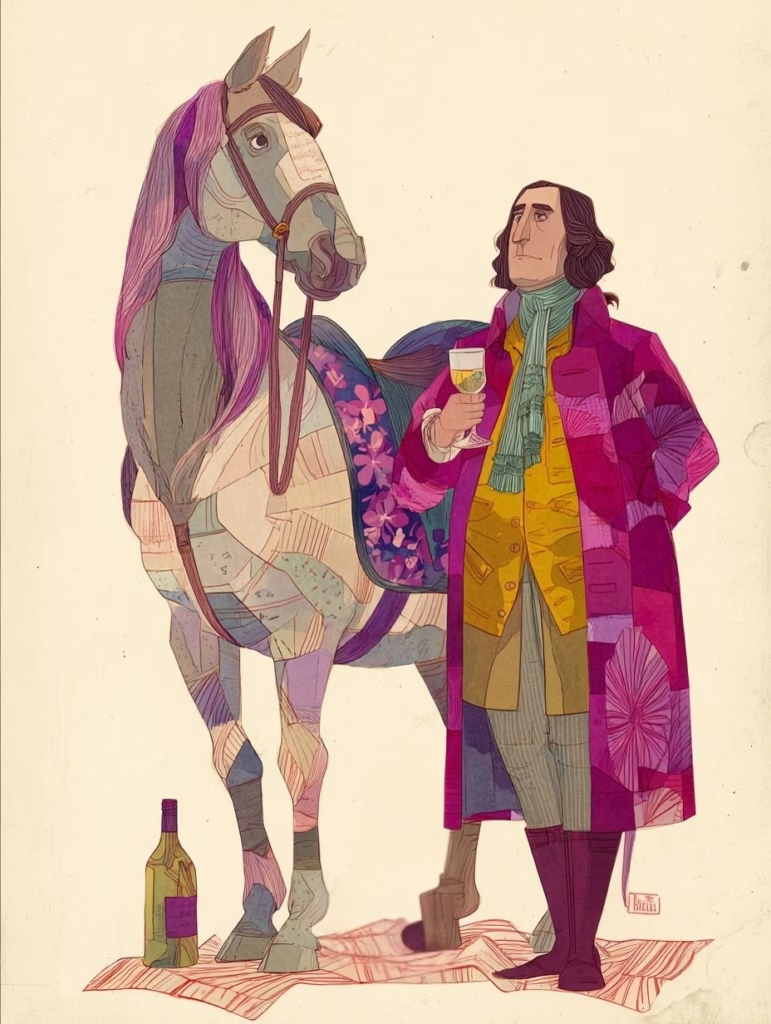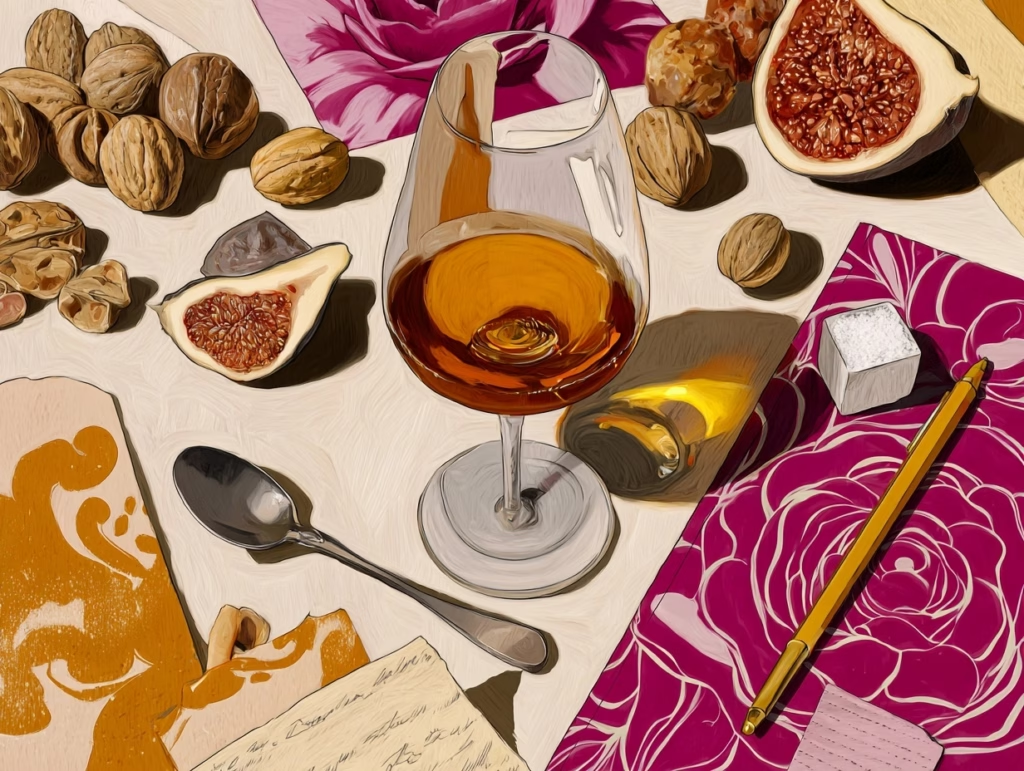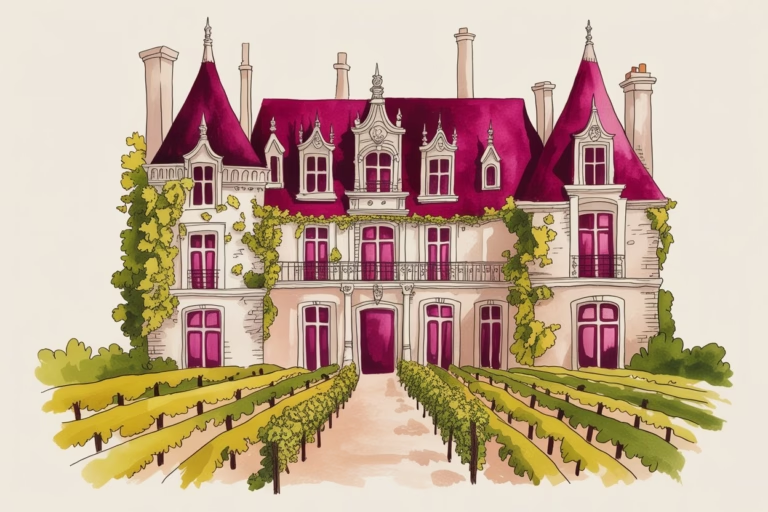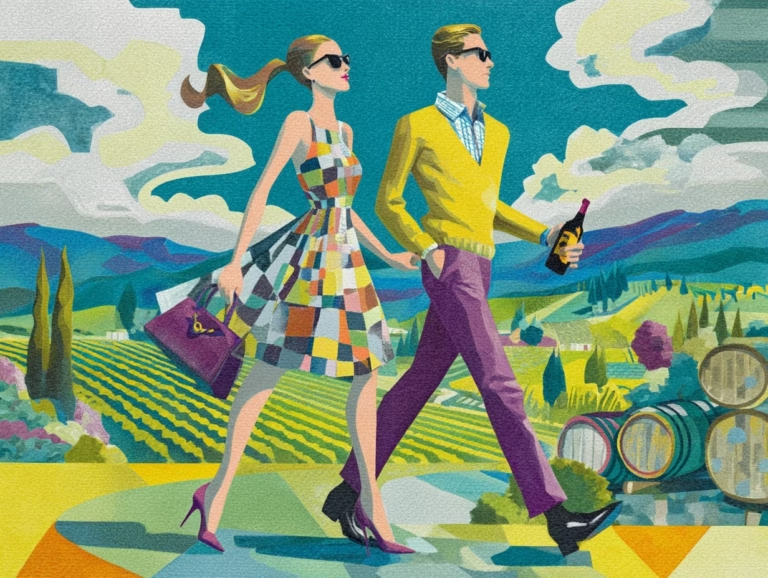Paul Revere’s Midnight Ride + Colonial Wine Culture
What did Paul Revere drink before his legendary midnight ride? Spoiler: probably Madeira! Dive into colonial wine culture, from imported Portuguese fortified wines to period-perfect cocktails you can make today.

Picture this: It’s April 18, 1775, and Paul Revere is about to become the ultimate neighborhood group chat admin, warning everyone that “the British are coming!” But before he hopped on his horse for that legendary midnight ride, what was he sipping? Plot twist: probably not a crisp Sauv Blanc.
Colonial America’s Wine Scene Was… Complicated
Think of colonial wine culture like trying to grow an avocado plant from a pit—technically possible, but mostly a struggle. Early American winemakers were giving it their best shot with European grape varieties, but between unfamiliar pests and climate curveballs, most attempts flopped harder than a Netflix dating show. The native grapes (Scuppernong and Catawba) produced wines that were… let’s just say they had personality. And not the fun kind.
So colonists did what any wine lover would do: they imported the good stuff from Europe. Enter Madeira—the Beyoncé of colonial wines.
Why Madeira Was the Ultimate Colonial Wine
Madeira was basically the Nokia phone of wines: indestructible and reliable. This Portuguese fortified wine could survive those brutal transatlantic journeys without turning into expensive vinegar, making it the MVP of colonial dinner parties.
What Makes Madeira Special:
- Intentionally heated and oxidized (like controlled damage for wine)
- Flavor profile: Think burnt caramel meets dried figs with a hint of sea salt
- Aging potential: This wine literally gets better with age—we’re talking centuries
- Styles range from dry (Sercial) to dessert-wine sweet (Malmsey)
Thomas Jefferson was obsessed with it. George Washington served it at state dinners. It was basically the wine equivalent of having blue checkmark status.
Spilling the Tea on the Colonial Wine Hierarchy
Top Tier:
- Madeira: The queen bee, perfect for toasting successful silversmithing businesses
- Port & Sherry: The supporting cast, delicate but imported less frequently
- Claret (red Bordeaux): For the colonial one-percenters
Everyday Reality: Most people were more likely drinking hard cider or rum than wine, but special occasions called for something fancier. Colonial punch—basically the original jungle juice made with citrus, sugar, spirits, and wine—was the party drink of choice.

How to Channel Your Inner Colonial Wine Drinker Today
Want to toast Paul Revere’s legendary ride? Here’s your shopping list:
🍷 Madeira – Go for Bual or Malmsey if you like rich, dessert-wine vibes, or try Sercial for something drier that pairs well with cheese boards and historical documentaries.
🍷 Bordeaux Blend – Any Cab Sauv/Merlot blend (whether from actual Bordeaux or Napa) channels that colonial claret energy.
🍹 Colonial Punch Recipe – Mix rum, citrus juice, tea, and simple syrup for the ultimate throwback cocktail that would make the founding fathers proud.
The Bottom Line
While Paul Revere was out there changing history, he was also part of a wine culture that valued quality imports, social drinking, and wines that could literally last centuries. Today’s wine scene might be more accessible (thank goodness), but there’s something romantic about sipping a Madeira and imagining the stories it could tell.
So next time you’re at the wine shop feeling overwhelmed by choices, remember: even the founding fathers had their wine preferences, and they helped build a country while figuring it out. You’ve got this! 🇺🇸
Cheers to midnight rides, bold beginnings, and wines with better stories than most Netflix series.



